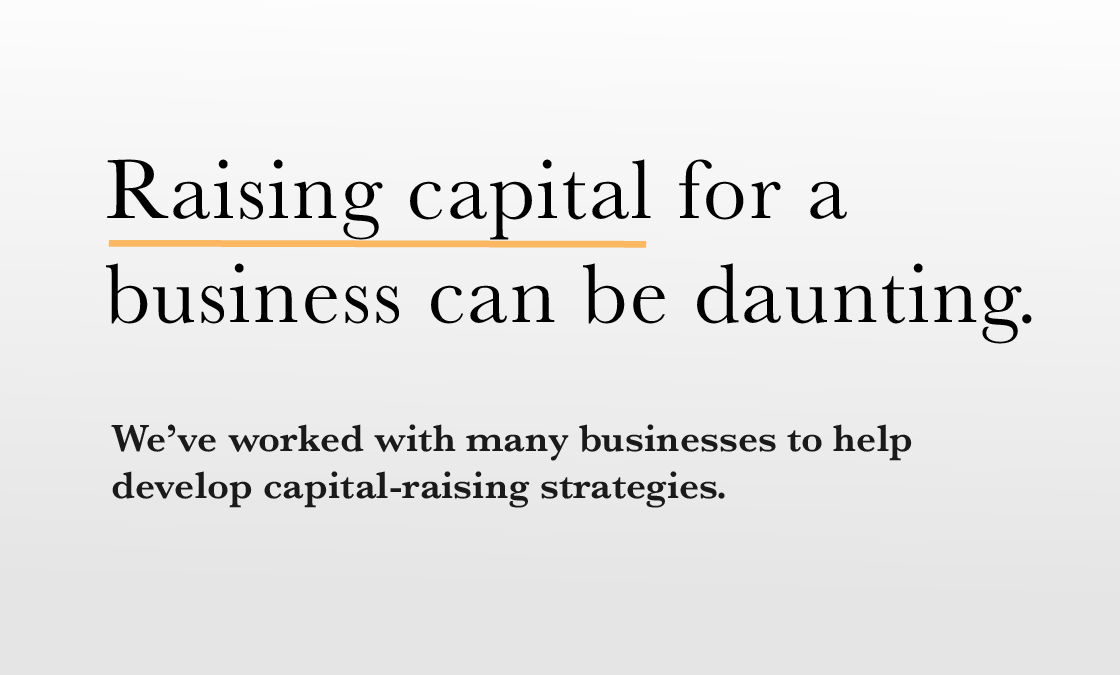Female entrepreneurship has steadily increased over the years. The National Association of Women Business Owners reports that there are more than 11.6 million businesses owned by women, generating $1.7 trillion in sales. However, even with increased representation among small business owners, female entrepreneurs make up only a small percentage of overall business owners. Even more worrisome is that 90 percent of all women-owned businesses are sole proprietors, meaning that only 10 percent hire employees. This means that most female-owned businesses do not have the growth needed to sustain or acquire additional employees. When asked what is needed for additional growth, studies have shown that 48 percent of women cite a lack of needed mentorship and a third of women cite lack of capital as a constraint.
Build a Network of Mentorship
One of the largest hurdles for female entrepreneurs is finding another person to help provide guidance and advice when needed. As goal-setting is a large part of ensuring success in the business world, a mentor can help keep a budding entrepreneur accountable for their goals while also providing challenges to continue to strive for goals. Goal-setting can be broken down into simple, smaller components that are more easily digestible by creating measurable actions, applying each action to a set time frame, determining what resources are available, and examining the cost of achieving that goal. Setting a goal that is too costly or with resources that are insufficient means that the goal may not be achievable, or a different type of goal should be set.
Another positive of having a mentor is that being a business owner can be debilitating to a person’s self-confidence. Studies have shown that women often undervalue their work compared to their male counterparts. Having a mentor available could help build up confidence in worth and in business, allowing the business to reflect those traits. Particularly if a woman is entering into a traditionally male-dominated industry, earning a place among their peers can be a difficult hurdle.
Lack of Access to Capital
In order to succeed, most businesses need to obtain capital, which means having access to bank loans or venture capital. Very rarely does an entrepreneur, with very little startup capital, develop their enterprise into a full-blown multi-million dollar company. For women, it is often more difficult to access loans from a bank than their male counterparts. Capital investment for female-owned businesses is often difficult to come by. In 2018, only 2.2 percent of venture capital went to female-founded start-ups. Interestingly, diversity within venture capital firms can seemingly increase a female entrepreneur’s chances of acquiring capital. Venture capital firms with female partners are more than twice as likely to invest in companies with a female executive on the team. In addition, venture firms with a female partner are more than three times as likely to invest in companies with female CEOs.
It was only in 1988, with the passage of HR 5050: Women’s Business Ownership Act of 1988 (WBOA), that women were allowed to take out business loans in their own name. Prior to the WBOA, female entrepreneurs were required to have a male co-signor in order to obtain a business loan, oftentimes their father, husband, or sons were co-signors, even if the male co-signor had nothing to do with the business. The WBOA established the Women’s Business Center Program, Office of Women’s Business Ownership at the Small Business Administration (SBA), and the National Women’s Business Council. In addition, the WBOA increased the SBA’s access to capital, and the SBA loan access programs remain one of the top funding methods for female entrepreneurs.
Common Ways to Access Both
The SBA’s 8(a) Business Development Program is designed to help provide a level playing field for small businesses owned by socially and economically disadvantaged people or entities, and the federal government’s goal is to award at least 5 percent of all federal contracting dollars to these types of businesses every year. In order to qualify as an 8(a) Business Development Program, the small business must be certified using the certify.SBA.gov website. Once a small business is certified, then the small business may qualify for the 8(a) Program, but must meet the eligibility requirements:
- Currently be a small business
- No prior participation in the 8(a) Program
- Must be at least 51 percent owned and controlled by U.S. citizens who are economically and socially disadvantaged
- Must be owned by someone whose personal net worth is less than $750,000
- Must be owned by a person whose average adjusted gross income for three years is $350,000 or less
- Must be owned by a person with $6 million or less in assets
- The owner must manage day-to-day operations and make long-term decisions
- All its principals must demonstrate good character
- Must show potential for success and be able to perform successfully on contracts received
The SBA also has the 8(a) Mentor-Protégé Program which allows mentor businesses to provide development assistance to businesses, such as technical and/or management assistance, financing in the form of equity investments, or enhancing the small business’s ability to compete for contracts. In order to qualify as a Protégé business, a small business must meet the following qualifications:
- Must be enrolled in the 8(a) program and be in good standing
- Must have at least six months remaining in the 8(a) Program term
- Meet at least one of the following conditions:
- Be in the developmental stage of the 8(a) Program;
- Have not received an 8(a) contract; or
- Be less than half the size of the small business size standard relating to its primary NAICS code
Mentor businesses must also qualify for the 8(a) Mentor-Protégé Program. Mentor businesses must be able to carry out the responsibilities to assist the Protégé business, possess favorable financial health and good character, cannot appear on the federal list of debarred or suspended contractors, and be able to impart value to protégés.
Alternative ways for female entrepreneurs to access capital is to use public, online crowdfunding sites. In 2016, the Jumpstart Our Business Startups (JOBS) Act was passed and allowed equity crowdfunding platforms to connect startups with individual and institutional investors. Sometimes the funding is in exchange for equity in the startup, but often, the investors can get their loan repaid with interest. Loans that are raised through crowdfunding are sometimes called debt crowdfunding. Crowdfunding can be appealing to startups because the small business can set the terms and, therefore, has more control over the funding as opposed to an angel investor’s or seed investor’s terms. Crowdfunding has been successfully used by female entrepreneurs to attract additional investment for growth opportunities.
It should be noted that when female entrepreneurs decide to use a crowdfunding platform online to raise capital, female entrepreneurs perform equal or better than their male counterparts. Crowdfunding is often viewed as democratizing the playing field when it comes to funding, and women often succeed here because they do not have to battle stereotypes often infused in traditional forms of funding. But even crowdfunding, like traditional forms of raising capital, needs proper planning and to attract investors. Often, to get over the initial friends and family push to raise capital means building an audience from which to potentially raise funds. One way to do this is to actively search out for match funding or collaborations with corporate partners or to build up a network to expand the small business’ reach.
Conclusion
Women-owned businesses are increasing steadily every year and now make up more than 30 percent of all small businesses. As female entrepreneurship continues to grow, so will their presence in the marketplace. Building the terms for equity raised through a crowdfunding site, especially for growth opportunities, may take some professional guidance through an attorney or accountant to ensure that the terms are friendly to the small business. Even navigating the SBA 8(a) Program may take some legal expertise to ensure that the qualifications for the program are met. As female-owned businesses compete with other businesses for market share, being well organized with established goals will only help women-owned businesses flourish. Female mentorship and access to funds go hand in hand. As female-owned businesses continue to thrive and succeed, so will their capital raising efforts and mentorship opportunities will increase.

![Buyers vs. Sellers: Negotiating Mergers & Acquisitions [e319]](https://www.pashalaw.com/wp-content/uploads/2022/06/Pasha_LSSB_BuyersVsSellers_banner-1024x723.jpg)







![Law in the Digital Age: Exploring the Legal Intricacies of Artificial Intelligence [e323]](https://www.pashalaw.com/wp-content/uploads/2023/11/WhatsApp-Image-2023-11-21-at-13.24.49_4a326c9e-300x212.jpg)
![Unraveling the Workforce: Navigating the Aftermath of Mass Layoffs [e322]](https://www.pashalaw.com/wp-content/uploads/2023/07/Untitled-design-23-300x212.png)
![Return to the Office vs. Remote: What Can Employers Legally Enforce? [e321]](https://www.pashalaw.com/wp-content/uploads/2023/01/Pasha_LSSB_321_banner-300x212.jpg)
![Explaining the Hans Niemann Chess Lawsuit v. Magnus Carlsen [e320]](https://www.pashalaw.com/wp-content/uploads/2022/10/LAWYER-EXPLAINS-7-300x169.png)
![California v. Texas: Which is Better for Business? [313]](https://www.pashalaw.com/wp-content/uploads/2021/07/Pasha_LSSB_CaliforniaVSTexas-300x212.jpg)
![Buyers vs. Sellers: Negotiating Mergers & Acquisitions [e319]](https://www.pashalaw.com/wp-content/uploads/2022/06/Pasha_LSSB_BuyersVsSellers_banner-300x212.jpg)
![Employers vs. Employees: When Are Employment Restrictions Fair? [e318]](https://www.pashalaw.com/wp-content/uploads/2022/05/Pasha_LSSB_EmployeesVsEmployers_banner-1-300x212.jpg)
![Vaccine Mandates Supreme Court Rulings [E317]](https://www.pashalaw.com/wp-content/uploads/2022/02/WhatsApp-Image-2022-02-11-at-4.10.32-PM-300x212.jpeg)
![Business of Healthcare [e316]](https://www.pashalaw.com/wp-content/uploads/2021/11/Pasha_LSSB_BusinessofHealthcare_banner-300x212.jpg)
![Social Media and the Law [e315]](https://www.pashalaw.com/wp-content/uploads/2021/10/WhatsApp-Image-2021-10-06-at-1.43.08-PM-300x212.jpeg)
![Defining NDA Boundaries: When does it go too far? [e314]](https://www.pashalaw.com/wp-content/uploads/2021/09/Pasha_LSSB_NDA_WordPress-2-300x212.jpg)
![More Than a Mistake: Business Blunders to Avoid [312] Top Five Business Blunders](https://www.pashalaw.com/wp-content/uploads/2021/06/Pasha_LSSB_Blunders_WP-1-300x212.jpg)
![Is There a Right Way to Fire an Employee? We Ask the Experts [311]](https://www.pashalaw.com/wp-content/uploads/2021/02/Pasha_LSSB_FireAnEmployee_Website-300x200.jpg)
![The New Frontier: Navigating Business Law During a Pandemic [310]](https://www.pashalaw.com/wp-content/uploads/2020/12/Pasha_LSSB_Epidsode308_Covid_Web-1-300x200.jpg)
![Wrap Up | Behind the Buy [8/8] [309]](https://www.pashalaw.com/wp-content/uploads/2020/11/Pasha_BehindTheBuy_Episode8-300x200.jpg)
![Is it all over? | Behind the Buy [7/8] [308]](https://www.pashalaw.com/wp-content/uploads/2020/09/iStock-1153248856-overlay-scaled-300x200.jpg)
![Fight for Your [Trademark] Rights | Behind the Buy [6/8] [307]](https://www.pashalaw.com/wp-content/uploads/2020/07/Fight-for-your-trademark-right-300x200.jpg)
![They Let It Slip | Behind the Buy [5/8] [306]](https://www.pashalaw.com/wp-content/uploads/2020/06/Behind-the-buy-they-let-it-slip-300x200.jpg)
![Mo’ Investigation Mo’ Problems | Behind the Buy [4/8] [305]](https://www.pashalaw.com/wp-content/uploads/2020/05/interrobang-1-scaled-300x200.jpg)
![Broker or Joker | Behind the Buy [3/8] [304] Behind the buy - Broker or Joker](https://www.pashalaw.com/wp-content/uploads/2020/04/Joker-or-Broker-1-300x185.jpg)
![Intentions Are Nothing Without a Signature | Behind the Buy [2/8] [303]](https://www.pashalaw.com/wp-content/uploads/2020/04/intentions-are-nothing-without-a-signature-300x185.jpg)
![From First Steps to Final Signatures | Behind the Buy [1/8] [302]](https://www.pashalaw.com/wp-content/uploads/2020/04/first-steps-to-final-signatures-300x185.jpg)
![The Dark-side of GrubHub’s (and others’) Relationship with Restaurants [e301]](https://www.pashalaw.com/wp-content/uploads/2015/04/When-Competition-Goes-Too-Far-Ice-Cream-Truck-Edition-300x201.jpg)
![Ultimate Legal Breakdown of Internet Law & the Subscription Business Model [e300]](https://www.pashalaw.com/wp-content/uploads/2019/05/Ultimate-Legal-Breakdown-of-Internet-Law-the-Subscription-Business-Model-300x196.jpg)
![Why the Business Buying Process is Like a Wedding?: A Legal Guide [e299]](https://www.pashalaw.com/wp-content/uploads/2019/03/futura-300x169.jpg)
![Will Crowdfunding and General Solicitation Change How Companies Raise Capital? [e298]](https://www.pashalaw.com/wp-content/uploads/2018/11/Will-Crowdfunding-and-General-Solicitation-Change-How-Companies-Raise-Capital-300x159.jpg)
![Pirates, Pilots, and Passwords: Flight Sim Labs Navigates Legal Issues (w/ Marc Hoag as Guest) [e297]](https://www.pashalaw.com/wp-content/uploads/2018/07/flight-sim-labs-300x159.jpg)
![Facebook, Zuckerberg, and the Data Privacy Dilemma [e296] User data, data breach photo by Pete Souza)](https://www.pashalaw.com/wp-content/uploads/2018/04/data-300x159.jpg)
![What To Do When Your Business Is Raided By ICE [e295] I.C.E Raids business](https://www.pashalaw.com/wp-content/uploads/2018/02/ice-cover-300x159.jpg)
![General Contractors & Subcontractors in California – What you need to know [e294]](https://www.pashalaw.com/wp-content/uploads/2018/01/iStock-666960952-300x200.jpg)
![Mattress Giants v. Sleepoplis: The War On Getting You To Bed [e293]](https://www.pashalaw.com/wp-content/uploads/2017/12/sleepopolis-300x159.jpg)
![The Harassment Watershed [e292]](https://www.pashalaw.com/wp-content/uploads/2017/12/me-2-300x219.jpg)
![Investing and Immigrating to the United States: The EB-5 Green Card [e291]](https://www.pashalaw.com/wp-content/uploads/2012/12/eb-5-investment-visa-program-300x159.jpg)
![Responding to a Government Requests (Inquiries, Warrants, etc.) [e290] How to respond to government requests, inquiries, warrants and investigation](https://www.pashalaw.com/wp-content/uploads/2017/10/iStock_57303576_LARGE-300x200.jpg)
![Ultimate Legal Breakdown: Employee Dress Codes [e289]](https://www.pashalaw.com/wp-content/uploads/2017/08/Ultimate-Legal-Breakdown-Template-1-300x159.jpg)
![Ultimate Legal Breakdown: Negative Online Reviews [e288]](https://www.pashalaw.com/wp-content/uploads/2017/06/Ultimate-Legal-Breakdown-Online-Reviews-1-300x159.jpg)
![Ultimate Legal Breakdown: Social Media Marketing [e287]](https://www.pashalaw.com/wp-content/uploads/2017/06/ultimate-legal-breakdown-social-media-marketing-blur-300x159.jpg)
![Ultimate Legal Breakdown: Subscription Box Businesses [e286]](https://www.pashalaw.com/wp-content/uploads/2017/03/ultimate-legal-breakdown-subscription-box-services-pasha-law-2-300x159.jpg)
![Can Companies Protect Against Foreseeable Misuse of Apps [e285]](https://www.pashalaw.com/wp-content/uploads/2017/01/iStock-505291242-300x176.jpg)
![When Using Celebrity Deaths for Brand Promotion Crosses the Line [e284]](https://www.pashalaw.com/wp-content/uploads/2017/01/celbrity-300x159.png)
![Are Employers Liable When Employees Are Accused of Racism? [e283] Racist Employee](https://www.pashalaw.com/wp-content/uploads/2016/12/Are-employers-liable-when-an-employees-are-accused-of-racism-300x159.jpg)
![How Businesses Should Handle Unpaid Bills from Clients [e282] What to do when a client won't pay.](https://www.pashalaw.com/wp-content/uploads/2016/12/How-Businesses-Should-Handle-Unpaid-Bills-to-Clients-300x159.png)
![Can Employers Implement English Only Policies Without Discriminating? [e281]](https://www.pashalaw.com/wp-content/uploads/2016/11/Can-Employers-Impliment-English-Only-Policies-Without-Discriminating-300x159.jpg)
![Why You May No Longer See Actors’ Ages on Their IMDB Page [e280]](https://www.pashalaw.com/wp-content/uploads/2016/10/IMDB-AGE2-300x159.jpg)
![Airbnb’s Discrimination Problem and How Businesses Can Relate [e279]](https://www.pashalaw.com/wp-content/uploads/2016/09/airbnb-300x159.jpg)
![What To Do When Your Amazon Account Gets Suspended [e278]](https://www.pashalaw.com/wp-content/uploads/2016/09/What-To-Do-When-Your-Amazon-Account-Gets-Suspended-1-300x200.jpg)
![How Independent Artists Reacted to Fashion Mogul Zara’s Alleged Infringement [e277]](https://www.pashalaw.com/wp-content/uploads/2016/08/How-Independent-Artists-Reacted-to-Fashion-Mogul-Zaras-Alleged-Infringement--300x159.jpg)
![Can Brave’s Ad Replacing Software Defeat Newspapers and Copyright Law? [e276]](https://www.pashalaw.com/wp-content/uploads/2016/08/Can-Braves-Ad-Replacing-Software-Defeat-Newspapers-and-Copyright-Law-300x159.jpg)
![Why The Roger Ailes Sexual Harassment Lawsuit Is Far From Normal [e275]](https://www.pashalaw.com/wp-content/uploads/2016/07/WHY-THE-ROGER-AILES-SEXUAL-HARASSMENT-LAWSUIT-IS-FAR-FROM-NORMAL-300x159.jpeg)
![How Starbucks Turned Coveted Employer to Employee Complaints [e274]](https://www.pashalaw.com/wp-content/uploads/2016/07/iStock_54169990_LARGE-300x210.jpg)
